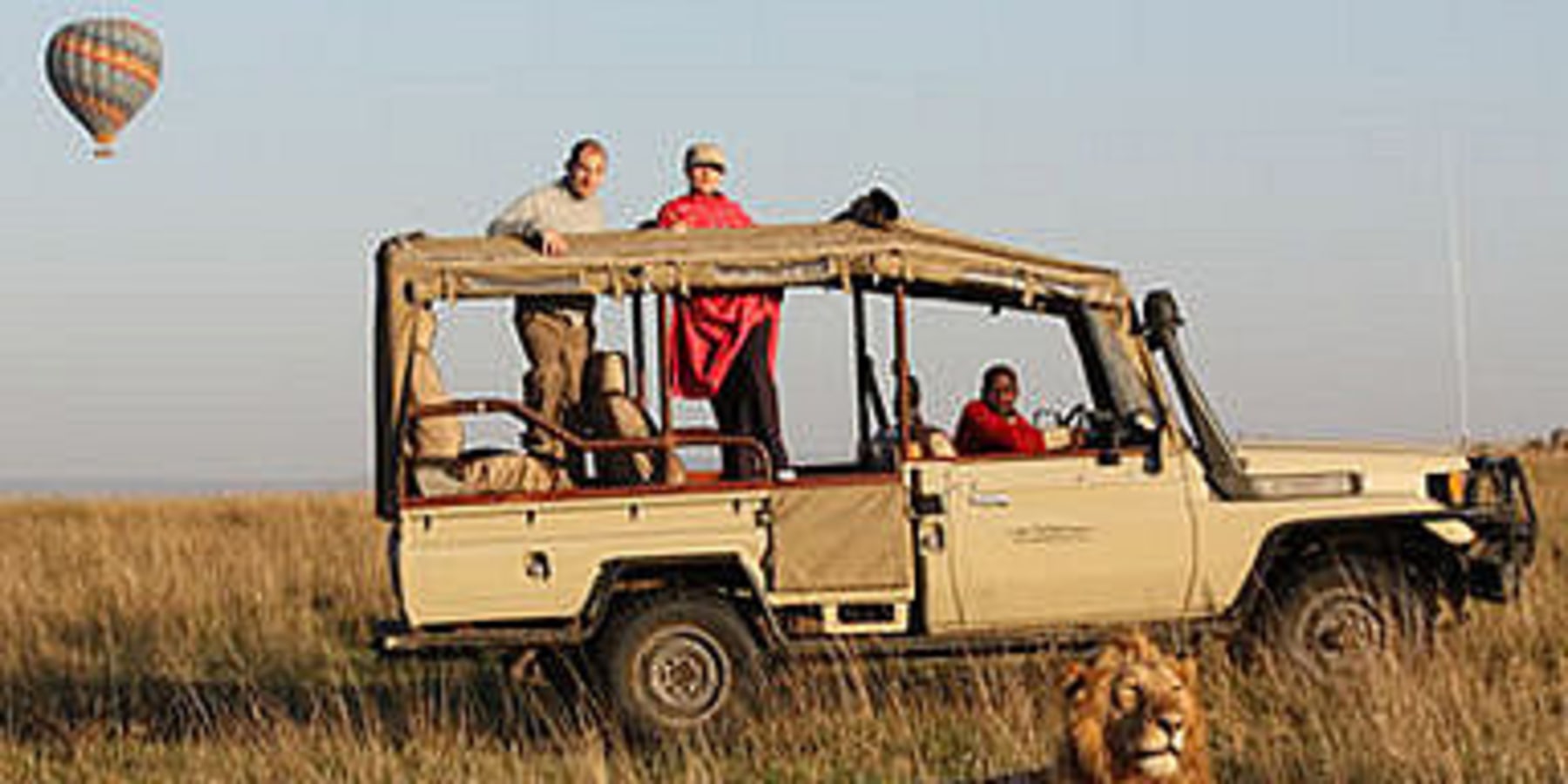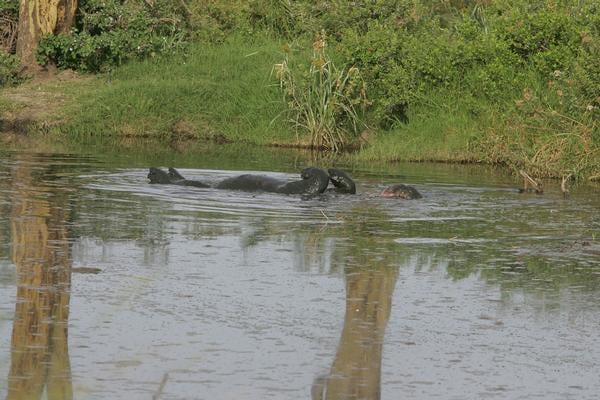
Do Not Plan Everything For Your Holiday Or Adventure!
In East Africa Kenya Tanzania and Uganda it is Good to leave some time for Nature to Happen.
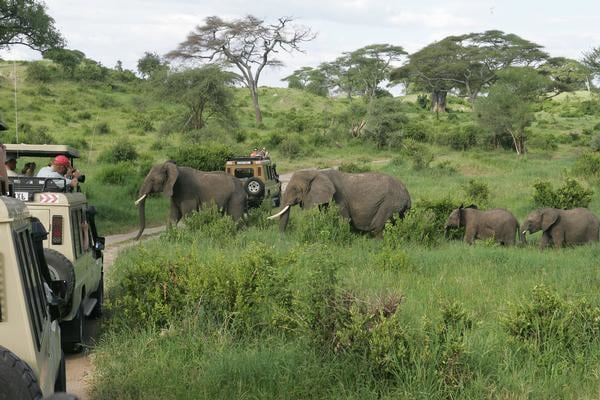
TANZANIA — After a two-week trip to Tanzania, I feel qualified to offer this list of four things my mother never told me about safari.
Of course, my mother never told me anything about safari, because although she and my father would have liked to have gone on one, they were too busy saving up for the Golden Years. And then they both died before they really got to enjoy theirs.
So when people ask me how I can afford to do things like running off to Africa, I keep that in mind.
You can never plan enough or save enough for travel. And a safari is a once-in-a-lifetime experience and worth every penny. Everyone should do it at least once. Really.
But before you go, here are those four things.
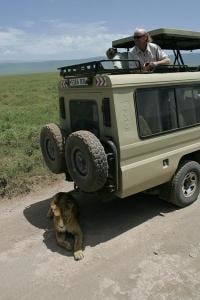
Safari seems easy enough, even romantic, when you read about it in the glossy travel magazines and guidebooks. The lantern-lit camps, the white-linen tablecloths spread with picnic lunches beneath the spreading acacia trees, the stalwart spear-carrying Masai warrior escorting you between bar stool and pool, hippos growling and lions roaring while you lie safe and snug in your gauzy mosquito-netted bed. And during the day you're chauffeured around to look for animals.Oh, yeah.
And while some of that is true, the reality of safari is that it's an adventure, and African adventure is challenging.
What makes safari hard? Mostly it's the driving. Lots of it. Bouncing around all day in a Land Cruiser with bad shocks and not much cushioning over endless rough roads. Often at high speed. Other times, lurching along in low gear. Sometimes it's easy to feel as if you've been attached to one of those ancient reducing belts. Blend in culture shock, sun, heat, dust, a few tsetse flies, some ill-tempered monkeys and a bit of nausea courtesy of a bad bit of water or food or the malarone taken to avoid malaria — hey, welcome to Africa!
There's lots of driving because distances are vast.
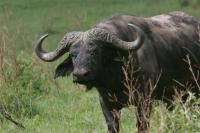
The Serengeti alone spreads over 12,000 square miles from the Masai-Mara Reserve in the north to the Ngorongoro Crater Conservation area in the south. That's about the size of Maryland. Tanzania is home to 14 other national parks, not including Serengeti National Park, itself a mere 5,000 square miles.
In addition, civilization is sparse in all of that landscape. A few paved roads. Some small towns, villages, lodges and camps. An airstrip or two. To get from one place to another between shortly after dawn to shortly after dusk — because you really don't want to get caught out there in the dark — and be able to stop and look and take it all in along the way, to eat your picnic lunch and stretch your legs and use the strategically placed pit toilets ... well, to do all that you occasionally have to drive like a bat out of hell.
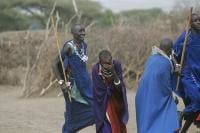
Safari is not for everyone
Actually, safari is for almost everyone. Our group of 14 ranged from ages 25 to 65, with the average somewhere in the mid-50s. People all shapes and sizes and levels of income, from unemployed to self-employed, along with three doctors, an emergency room nurse and a chiropractor. And, of course, me — Mr. Spur-of-the-moment, who hadn't planned on going on safari and hadn't saved up for it, and just decided to go when the opportunity presented itself.
One of the enjoyable things about safari is meeting other safarians, and these ranged from families with small children and teenagers to groups of septuagenarians who looked as if they accidentally booked a safari instead of a cruise.
But everyone I saw — everyone — looked to be having a lovely time. The camps and lodges overflowed with animated chatter each night about the day's adventures and sights. I never heard any complaining about anything.
Which brings me to my next point: While safari is pretty much for everyone, it is not for those who are particular about schedules and those who need to have everything happen exactly so. When you are in Africa, things happen on Africa time — which is to say, they happen when they happen. Or they don't.
There can be unexpected delays for hours. The Land Cruiser can break down. You can have a flat tire and be helping the driver to change it while herds of zebras run willy-nilly and a group of smiling Masai walk over to watch and make funny observations among themselves about the crazy Mzungu.
Nor is safari for the squeamish. Safari is not Disneyland. The Serengeti, it has been said, is the kingdom of predators and predators' prey.
For example, we spent an enchanting morning watching a cheetah mother and her three cubs frolicking about, only to learn later that night that a lion had come along shortly after we left and had killed and eaten one of the cubs.
Safari is expensive
Yes, safari is expensive. But compared to what? It's a drop in the bucket compared to a new car. Or a boat. It all depends on what your priorities are. There are all manner and types of safari, and you can have it any way you like, from walking tours in the bush with armed escorts to basic hire-a-guide and tenting out in campgrounds, and everything in between. Our trip cost $6,000 each, not including the $200 airfare from Denver to Minneapolis, where we boarded a plane to Arusha, Tanzania, all meals and gratuities included. Our trip was called an African Duo-Adventure and included a week-long trek up Mount Kilimanjaro along with the week on safari.
Climbs of Kilimanjaro (elevation 19,341 feet) are often packaged with safari. Kilimanjaro is the highest peak in the world you can climb without oxygen (although that would be nice) and mountaineering gear. It's a walk-up. But don't be fooled. It's a real mountain, and that walk up is one of the most difficult things you'll ever do. Jeff, a guy on our trek, said that trekking up Kilimanjaro was like being on a StairMaster from hell and breathing through a straw.
We stayed at Arumeru River Lodge outside of Arusha before and after the Kilimanjaro trek, and the Maramboi Tented Lodge near Tarangire National Park. The Seronera Wildlife Lodge was our home for two nights in the Serengeti, and the Ngorongoro Farm House on our last night after we'd visited Ngorongoro Crater.
The Maramboi was the most exotic, with its outdoor dining looking out at Lake Mayanra and its famous flamingos and its lodge and tent camps built up on stilts and the afore- mentioned armed guards escorting us along the paths in the early and late hours. The Ngorongoro Farm House was the most beautiful, a working farm, lush with flowering gardens and dense with forest. Simply the most romantic place I've ever been, with its birdsong in the morning and evenings, a huge tiled bathroom and shower, spacious rooms complete with a porch to sit out on and a crackling fireplace inside.
The Seronera lodge, built around natural rock formations, was the most average, but even so, it was a room and a bed in the Serengeti, complete with hippos grunting and grazing out there in the darkness beyond the sliding glass door. And far far plusher than any budget place I'd ever stayed in Africa. I mean, really, the showers worked most of the time and the toilets flushed. What more can you ask of Africa?
Safari is dangerous
It can be. People do get eaten by lions on safari. And trampled by elephants. It is Africa, after all.
But we were less than a dozen feet away from elephants — herds of elephants — and had elephants close enough that they threw our Land Cruiser into shadow. We were eye to eye and within touching distance of lions, surrounded by wildebeest and so close to Cape buffalo that their brutish, cowish smell was pungent. Even so, I never once felt as if I was in trouble.
Then again, I had no desire to throw open the door and step out of the vehicle for a closer look.
The most dangerous thing on safari, though, is probably the sun, which is relentless, followed by the malaria-packing mosquitoes, then the tsetse flies carrying nasty sleeping sickness, and the even nastier monkeys. You take preventive meds for the malaria. And as for the flies, well, the ability to swat is why we have hands. The best prevention is to avoid the bites, and to try to kill every living or flying thing in your vehicle and room.
10 tips for Tanzania safari
1. Take lots of dollars. Even though gratuities are "covered" in many Safari packages, keep in mind that Africa runs on tips. A dollar here, a dollar there for pictures, baggage-handling, drivers and guides (but don't over-tip; ask your driver what's reasonable). And no dirty or torn bills, but not freshly minted either.
2. Buy an English/Swahili phrasebook and use it. You will make instant friends by using the official language of safari.
3. Do not take pictures of anyone without permission. Yes, it makes getting candid shots difficult, but get permission, then wait to see if the subject will relax. Do not stick your camera out of the Land Cruiser window while you are driving through Arusha; it will be snapped off your hand by bandits riding scooters, and if you have it around your neck your head may go with it. Use one camera and keep your hand on it when you move in crowded markets and cities.
4. Do not take photos of Masai standing by the roadside without permission or from your moving vehicle. They will throw rocks, and they are very, very accurate. Do visit a Masai village. They are the coolest people, and in most cases as friendly and eager to learn about you as you are about them. Sitting in a Masai hut with the fire going, talking about each other's lives is a priceless experience. It's worth it to pay a translator.
5. Take plenty of SD or CF cards. More than you think you'll possibly use. Buy a back-up hard drive. I use a Wolverine 250-gig battery-powered portable and back up everything nightly, shooting only 4 gig cards, changing the extra cards and putting in fresh ones each night to avoid loss of images should one become damaged or a camera lost or stolen.
6. Take two camera bodies, and three if possible. Because of the dust, you do not want to change lenses while out on safari, which exposes the sensors. Use one camera for wide angle and one for a long lens and a third as a backup.
7. You do not need as long a lens as you think. I shot almost everything with lenses from 24mm to 300mm, and because the animals were so close, often found myself backing off of the big lenses. Of course, you can run into one of those days when everything is far away — it happens. Take a beanbag to rest your long lenses on to shoot out of vehicle windows and off rooftops (tripods are almost worthless on safari). I improvised with a locally made zippered bag filled with coffee beans.
8. Keep your cameras in plastic garbage bags. Or a Ziploc or other bags that protect them and fit over the lens.
9. Most lodges have only one outlet per room.Take a three-prong electrical adapter for Africa and an international powerstrip so that you can have more than one outlet. However, you will need an adapter for the wall socket and an adapter for each of the sockets in the powerstrip. Most lodges shut off the generators at night. You also may find a 12-volt inverter handy for charging batteries while you're in the car, if the lighter socket works, and often they don't.
10. Always do what the driver says.
Dean Krakel: 303-954-1613, dkrakel@denverpost.com

